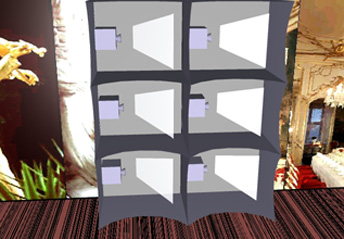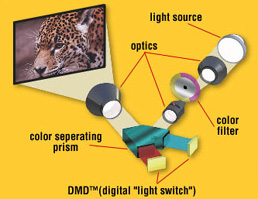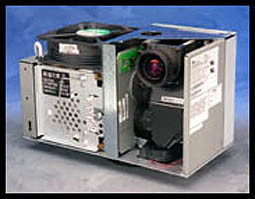
Introduction:
Conventional projection display technology fails to reach really high resolution because of technical and developmental limitations on both display and computer display driver technology and a too conservative view of what can and should be achieved. We seek to vault these limitations by using just available technology creatively to acheive the highest resolution projection display to date.
The size of the display is variable and is set by the
type and configuration of the projection lens and associated optics. This
means that it can be integrated as another parameter into the physical
design problem space. For example, one type of display might be a diarama
overhead which needed to be 30 feet wide to fill the space. In this case
a front projection approach from behind and above the audience would be
appropriate. Another example might be a 6ft high display wall with which
the viewers were to interact by pointing or drawing directly. In this case
a folded optics rear projection approach would suffice. A final example
uses multiple projectors outside a ¾ tranluscent sphere, solving
the seam and distortion problems with creative optics and image warping,
to create an immersive environment.
 |
|
| Floor/Wall/Ceiling display space | Inside wall unit |
Huges JVC has demonstrated seamlessly butting Kopin AMLCD Active Matrix
modules as input to their the Image Light Amplifier. The TI Digital Micromirror
Device, is an array of time addressable moving mirrors, which affords very
sharp bright imagery at reasonable cost. Seamlessness is acheived by dispensing
the light from a central arc source and then butting the multiple displays
though an optical integration compositing device. Each of these engines
will create a full color image of 1280 by 1024 pixels. Six arranged in
a 2 by 3 grid will create a 2048 by 3840 pixel image.
 |
 |
| TI Digital Light Modulator Schematic | TI 2Chip Light Engine |
.
.
TI DMD Approach
Hughes ILA Approach

for more information contact ronmac@media.mit.edu